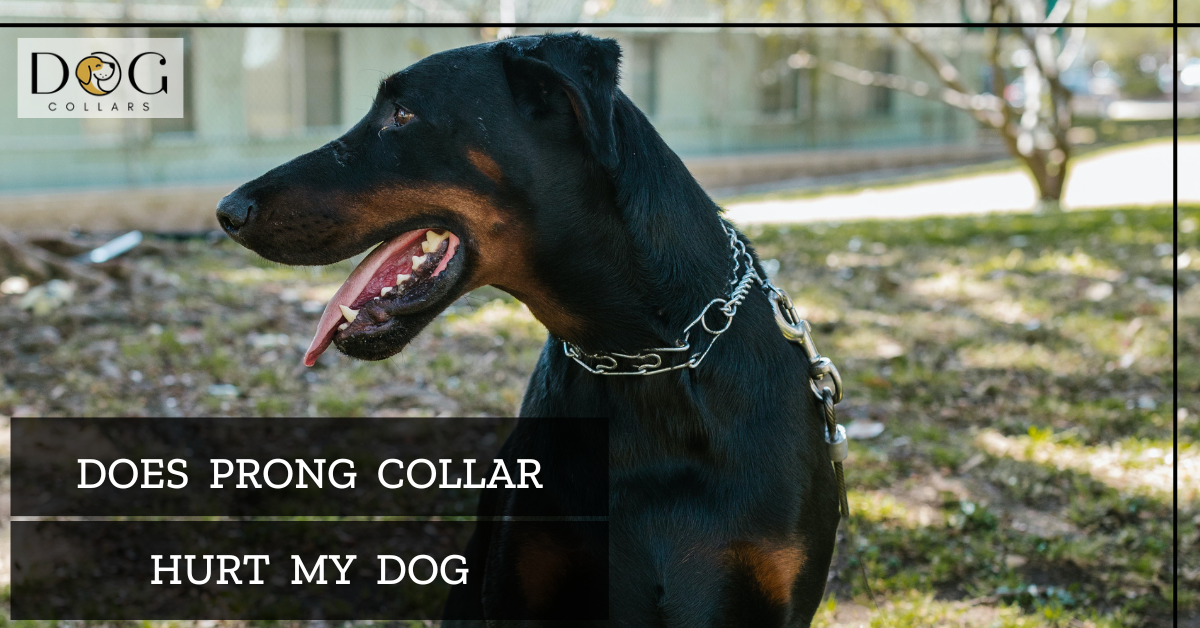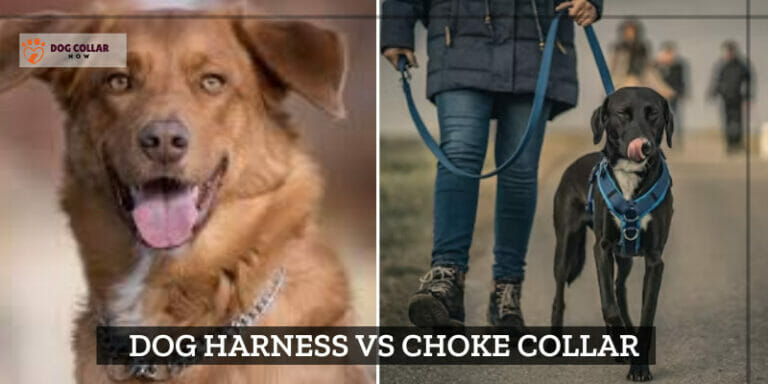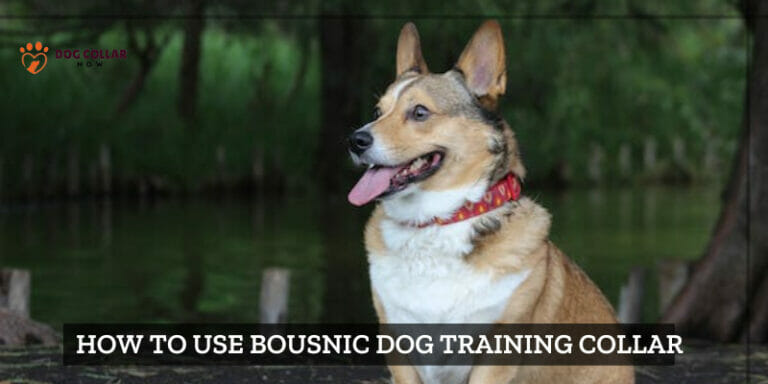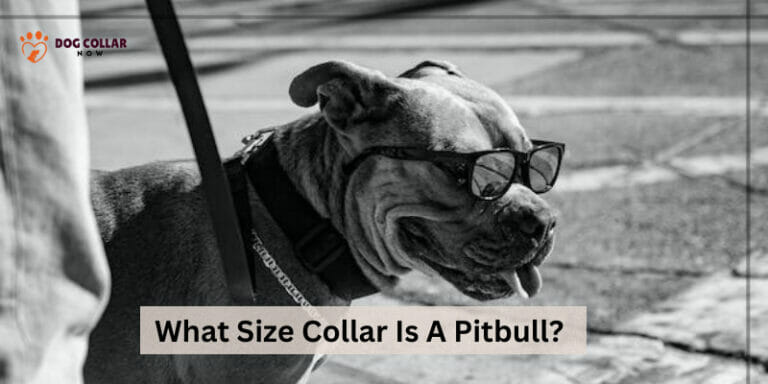Does Prong Collar Hurt My Dog? Discover the Truth

As a dog owner, the idea of causing any harm or discomfort to your furry friend is likely to be the last thing you want.
Some people argue that prong collars are a necessary tool for controlling and training dogs, while others believe that they are cruel and inhumane.
Prong collars can cause discomfort and pain to dogs, and there is evidence that they can cause physical harm, so it’s important to use them with caution and consider alternative training methods.
One of the most common concerns is whether prong collars hurt dogs. As responsible pet owners, we all want the best for our loyal companions. Join us as we dive into the question on every dog parent’s mind: Does Prong Collar Hurt my Dog?
Does Prong Collar Hurt My Dog
When it comes to prong collars, opinions are divided. Some people believe that prong collars are an effective tool for controlling dogs and correcting their behavior, while others argue that they are inhumane and can cause harm to dogs.
The truth is, prong collars can indeed cause discomfort and pain to dogs. When the collar is tightened, the prongs can press into the neck, causing a sensation that is often described as a pinch or a poke.
In addition to causing discomfort, there is evidence that wearing a prong chokers can cause physical harm to dogs.
Some studies have shown that it can cause cuts, bruises, and other injuries to a dog’s neck. They can also cause nerve damage, which can result in lasting pain and discomfort for the dog.
It’s important to note that prong collars should only be used under the guidance of a professional dog trainer, and even then, they should be used with caution.
The Argument Against Prong Collars
Prong collars are a controversial tool in dog training. Some consider them effective, but others argue they are painful and harmful. Now we examine the arguments against prong collars and the evidence for and against their use.
- Prong collars can cause pain and discomfort to dogs:
The prongs can press into the neck and cause a sensation that is often described as a pinch or a poke. This can be unpleasant and even painful for the dog, and may cause them to become fearful or anxious.
- Prong collars may cause physical harm to dogs.
Studies have shown that prong collars can cause cuts, bruises, and other injuries to a pup’s neck. They can also cause nerve damage, which can result in lasting pain and discomfort for the dog.
- Prong collars can have long-term effects on a dog’s behavior.
Some trainers argue that the use of prong collars can lead to a dog becoming more aggressive or fearful. This is because the dog may associate the discomfort caused by the prongs with other stimuli, such as other dogs or people.
- Prong collars can damage the relationship between a dog and its owner.
Using a prong collar may cause a dog to become fearful of their owner or associate them with pain and discomfort. This can damage the bond between a dog and its owner and may make it more difficult to train the dog in the future.
- There are many more humane and effective training methods available.
Positive reinforcement dog training, where good behavior is rewarded, has been shown to be effective in correcting unwanted behavior in dogs. This method focuses on building a strong bond between the dog and its owner and does not involve the use of aversive tools like prong collars.
The Argument For Prong Collars
Prong collars are a popular training tool for their quick correction and even pressure. Though some call for a ban, others argue that they are safe and humane when used correctly.
- Prong collars can be an effective training tool when used correctly.
They are designed to mimic the way a mother dog would correct her puppies by using her teeth to grab them by the neck. This provides a clear, immediate correction to the dog when they misbehave, helping to reinforce good behavior.
- Prong collars are often used as a last resort.
Some dogs may be difficult to train your dog using positive reinforcement methods alone. In these cases, a prong collar may be necessary to correct unwanted behavior and keep the dog safe.
- Prong collars are often misunderstood.
Many people believe that prong collars are painful or cruel to dogs. However, when used correctly, they should not cause pain or discomfort. The prongs are designed to be distributed evenly around the neck, so the pressure is spread out and not focused on one point.
- Prong collars can be adjusted for the individual dog.
A properly fitted prong collar should be snug but not tight around the neck, and the size of the prongs can be adjusted depending on the dog’s size and sensitivity. This means that prong collars can be tailored to the specific needs of each dog.
- Prong collars can help prevent injury.
Dogs that pull on their leash can put themselves at risk of injury, especially if they are large or strong. By providing a clear, immediate correction, a prong collar can help prevent the dog from pulling and potentially hurting themselves.
Trainers’ Opinions On Prong Collars
- Some trainers are strongly against the use of choke and prong collars. They believe that positive reinforcement methods should be used exclusively to train dogs and that pronged collars are cruel and unnecessary.
- Other trainers believe that prong collars can be a useful training tool in some situations. They may use prong collars as a last resort for dogs.
- Trainers who use prong collars believe that they can be a humane training tool when used correctly. They stress the importance of proper fit and adjustment and avoid using excessive force or pressure on the collar.
- Many trainers believe that prong collars should only be used by experienced trainers who understand how to use them correctly. They caution against using prong collars without proper guidance, as they can cause harm if used incorrectly.
- Some trainers believe that the debate over prong collars is not productive and that the focus should be on training methods that work best for individual dogs.
Proper Use And Training
- Choosing the right collar:
It’s important to choose a high-quality prong collar that is well-made and sturdy. Look for collars made of materials such as stainless steel or chrome for durability.
- Proper fitting and placement:
It’s essential to ensure that the prong collar is properly fitted and placed on your dog. The collar should be snug, but not too tight, and should be positioned high on the pet’s neck, just behind the ears.
- Training methods for prong collars:
When using a prong collar, it’s important to use positive reinforcement training methods in combination with the collar. Avoid using excessive force or pressure on the collar and instead, use gentle leash corrections to guide your dog.
It’s also important to avoid using prong collars on puppies or young dogs, as their necks are still developing and may be injured by the collar.
Alternatives To Prong Collars
If you’re looking for alternatives to prong collars, there are several options available that can be equally effective without causing any harm to your furry friend.
- One alternative is a flat collar which works great for dogs who don’t pull or lunge. It’s lightweight and comfortable, making it ideal for everyday use.
- Another option is a harness, which distributes the pressure evenly around the dog’s body rather than concentrating it on its neck.
This type of collar works especially well for breeds with short snouts or necks like pugs and bulldogs.
- Martingale collars are another great alternative as they provide more control over your dog while still being gentle on their neck.
They work by tightening slightly when pulled, preventing escape artists from slipping out of their collar without choking them.
- For dogs who have mastered basic leash manners but still need some reinforcement, head halters can be an excellent tool. These collars gently guide the dog’s head in the direction you want them to go and discourage pulling without putting any pressure on its collars throat.
Conclusion
In conclusion, the use of dog prong collars remains a controversial topic with arguments both for and against their use.
While some trainers argue that prong collars can be an effective training tool when used properly and with positive reinforcement techniques, others believe that the potential risks of physical harm or emotional distress to dogs outweigh any potential benefits.
It’s important for dog owners to carefully consider their options and seek guidance from an experienced trainer before deciding to use a pinch collar. Ultimately, the goal should be to train and guide your dog in a safe and humane manner, and to avoid causing any unnecessary harm or discomfort.
FAQs:
What is a Prong Collar?
A Prong Collar, also known as a Pinch Collar, is a type of training collar that consists of a series of metal prongs that sit around the pup’s neck. The prongs are designed to put pressure on the neck when it pulls or misbehaves.
Is a Prong Collar a Safe Training Tool?
The use of a prong collar as a training tool is a controversial topic. While many dog owners and trainers believe that it can be an effective way to train a dog, others believe that it can cause harm or damage to a neck.
How Do I Use a Prong Collar?
It is important to use the collar correctly to avoid causing harm to your dog. Start with training techniques that do not involve using the prong collar, such as teaching your dog basic commands with other collars. Once your dog is comfortable wearing the prong collar, use it to correct unwanted behaviors such as pulling on the leash.
Are Prong Collars and Choke Collars the Same Thing?
No, a prong collar is not the same as a choke collar. While both types of collar are designed to correct unwanted behaviors by putting pressure on the dog’s neck, a choke chain tightens when it pulls, while a prong collar would have a series of metal prongs that put pressure on specific points on the pet’s neck.
Can Prong Collars Cause Injury to Dogs?
When used properly, prong collars should not cause injury to your dog. It is important to use the right size of prong collar and to fit it correctly to your dog’s neck. Prong collars should also only be used under the guidance of a professional trainer who can teach you how to use them properly.
Can Prong Collars Be Used on Any Dog?
Prong collars can be used on most dogs, but they are not recommended for use on young puppies, dogs with neck injuries, or dogs with respiratory problems.






